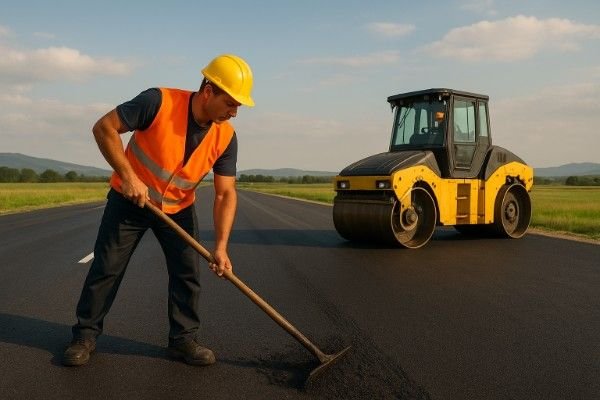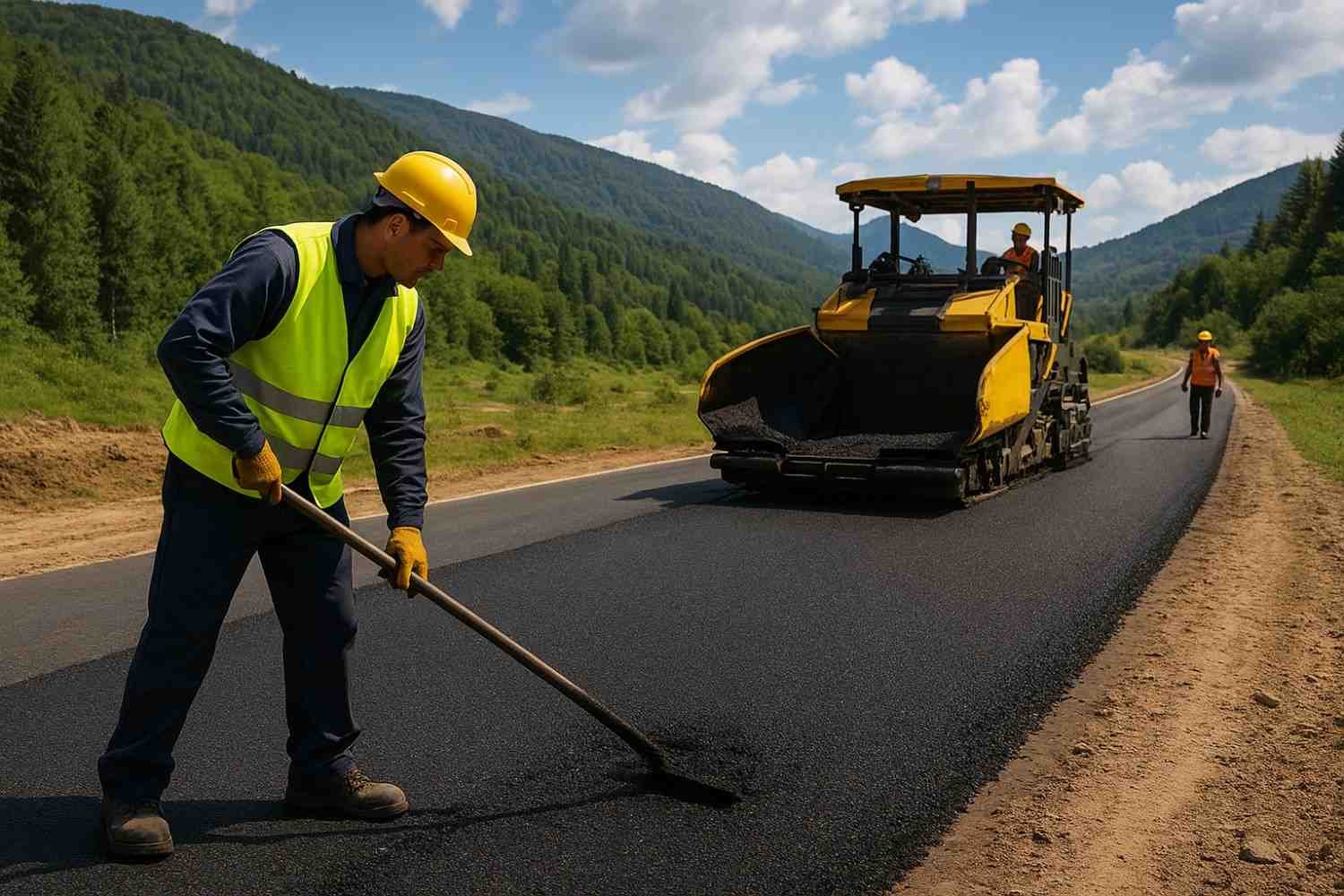Modern Bitumen Innovations and Sustainability
Table of Contents
Introduction
Bitumen has long been the primary binder for asphalt pavements worldwide. Traditional production and construction methods, however, can be energy-intensive and produce significant greenhouse gas emissions. In response, modern civil engineering focuses on innovations that improve performance, extend service life, and reduce environmental impact. This article reviews the most important contemporary advances: Polymer-Modified Bitumen (PMB), Warm Mix Asphalt (WMA), and Reclaimed Asphalt Pavement (RAP), and discusses how these technologies support sustainable road construction.
Polymer-Modified Bitumen (PMB)
What is PMB? Polymer-Modified Bitumen is produced by blending conventional bitumen with polymers such as styrene-butadiene-styrene (SBS) or ethylene-vinyl acetate (EVA). The polymer phase improves elasticity, toughness, and temperature susceptibility.
Key Advantages
- Improved flexibility: PMB tolerates thermal cycles and resists low-temperature cracking.
- Higher rutting resistance: Polymer networks increase stiffness under heavy loads at high temperatures.
- Extended pavement life: Longer service intervals and reduced maintenance frequency.
- Better adhesion: Improved aggregate-binder bonding reduces stripping in wet environments.
Applications & Sustainability
- Used on highways, airport runways, and heavy-duty industrial pavements.
- Although PMB manufacturing can be more energy demanding, lifecycle benefits (fewer repairs, longer life) Often yield net environmental advantages.
Warm Mix Asphalt (WMA)
What is WMA? Warm Mix Asphalt refers to technologies and additives that allow asphalt mixtures to be produced and placed at temperatures typically 30–40°C lower than Hot Mix Asphalt (HMA). Methods include organic additives, chemical surfactants, and water-foaming techniques.
Environmental & Operational Benefits
- Lower CO₂ emissions: Reduced heating energy reduces greenhouse gas output during production.
- Fuel savings: Less fuel is consumed in heating aggregate and binder.
- Improved worker safety: Reduced fumes, smoke, and heat exposure on site.
- Extended paving season: WMA enables paving in cooler weather windows and at longer transport distances.
Performance Characteristics
- WMA can achieve compaction levels comparable to HMA when properly designed.
- Lower mixing temperatures reduce oxidative aging of the binder during production, which can improve durability.
- Field performance is typically similar to HMA when following good mix design and quality control practices.
Bitumen Recycling & Reclaimed Asphalt Pavement (RAP)
What is RAP? Reclaimed Asphalt Pavement (RAP) is the recovered material from milled or demolished asphalt pavements that can be processed and reused in new mixes. RAP reduces the need for virgin aggregates and bitumen.
Recycling Techniques
- Hot Recycling: RAP is heated and blended with virgin materials to produce a new HMA-like mixture.
- Cold Recycling: Uses emulsions or foamed bitumen to bind RAP without heating, suitable for in-place reuse.
- In-Place Recycling: Milling and reprocessing at the project site reduces transport, saving energy and cost.
Benefits & Sustainability Impact
- Significant material savings — reduces demand for new aggregates and virgin bitumen.
- Lower disposal and transportation costs — less waste sent to landfills.
- Energy and emission reductions versus full reconstruction using new materials.
- Cost savings — projects using RAP can be 15–25% cheaper depending on mix and logistics.
Future Trends: Bio-Bitumen, Nano-Additives & Self-Healing Asphalt
Research is rapidly expanding beyond current technologies. Emerging directions include:
- Bio-based binders: Bitumen alternatives from renewable feedstocks (vegetable oils, lignin) to reduce fossil dependence.
- Nano-modification: Incorporation of nano-clays, graphene, or carbon nanotubes to improve mechanical properties and durability at low load additions.
- Self-healing pavements: Encapsulated rejuvenators or conductive materials that enable crack healing under activation (heat, microwaves) to extend service life.
These innovations aim to further reduce lifecycle environmental impact while improving performance—key goals for sustainable infrastructure development.
Summary Table: Technologies & Benefits
Quick reference for engineers:
- PMB: Enhanced performance, longer life; good for heavy-load pavements.
- WMA: Lower emissions and fuel use; improved onsite conditions; comparable durability to HMA.
- RAP: Material and cost savings; reduced waste and emissions; supports circular construction.

- Combined approaches (e.g., PMB + RAP or WMA + RAP) can yield synergistic benefits when properly designed.
- Quality control, testing, and local climate considerations remain critical for reliable performance.
Conclusion
Modern bitumen technologies — Polymer-Modified Bitumen, Warm Mix Asphalt, and Reclaimed Asphalt Pavement — collectively push the road construction industry toward greater durability and sustainability. When engineers integrate these methods into design and maintenance strategies, they can reduce lifecycle costs, lower emissions, conserve materials, and deliver longer-lasting pavements. Continued research into bio-bitumen, nano-additives, and self-healing systems promises even better environmental and performance outcomes in the near future.





